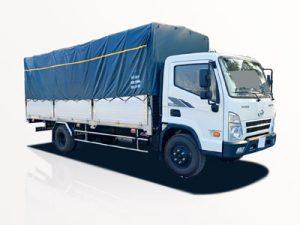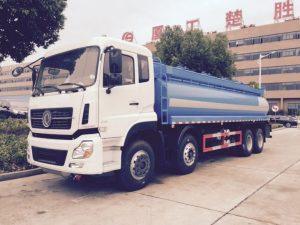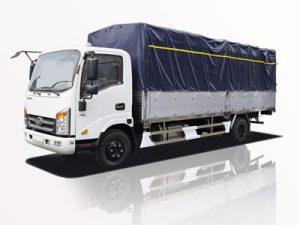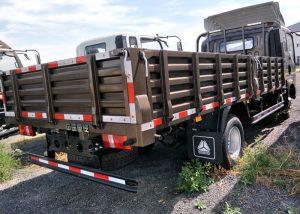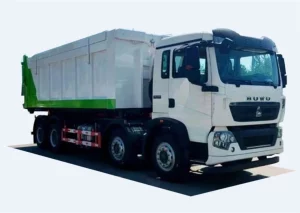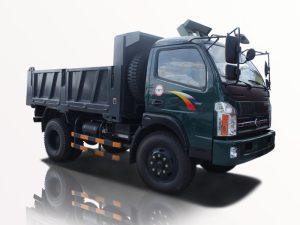Monday to Saturday - 8:00 -17:30
Airport Fire Trucks: Essential Equipment for Aviation Safety
Airport fire trucks play a crucial role in maintaining safety and combating potential fire hazards at airports. These specialized vehicles are designed to respond to emergencies involving aircraft, fuel, and other potential hazards unique to the aviation sector. This article delves into the significance of airport fire trucks, their specifications, operation, management, and the critical role they play in airport safety.
Understanding Airport Fire Trucks
Airport fire trucks, also known as Aircraft Rescue and Fire Fighting (ARFF) vehicles, are tailored for emergency response within airport environments. They are equipped to deal with aircraft emergencies, including fires, fuel spills, and other potential crises that may arise on the tarmac or in terminal areas.
History of Airport Fire Trucks
The development of airport fire trucks dates back to the mid-20th century, with the advent of commercial aviation. As air travel expanded, so did the need for specialized firefighting equipment. Early models were simple adaptations of municipal fire engines, but advancements in technology and aviation research have led to the creation of highly specialized vehicles.
The Evolution of Technology
Modern airport fire trucks are equipped with sophisticated technology, ranging from advanced extinguishing agents to communication systems that allow coordination with other emergency services. This evolution has increased the efficiency and effectiveness of firefighting efforts at airports worldwide.
Key Features of Airport Fire Trucks
| Feature | Description |
|---|---|
| Fast Response Capability | Designed for rapid deployment, with top speeds typically exceeding 70 mph. |
| Water and Foam Capacity | Ability to carry large volumes of water (often over 1,500 gallons) and foam agents. |
| High-Pressure Pumps | Equipped with powerful pumps to deliver water and foam at high pressures for maximum efficacy. |
| Stability and Maneuverability | Features such as four-wheel drive and specialized tires for off-road capability. |
| Advanced Communication Systems | Includes radios and other systems to coordinate with air traffic control and local fire departments. |
| Specialized Nozzles | Nozzles designed to optimize the dispersal of foam and water for various situations. |
Importance of Fire Extinguishing Agents
The effectiveness of airport fire trucks largely hinges on the extinguishing agents they utilize. Typically, a combination of water, foam, and dry chemical agents is employed to counteract fires caused by aviation fuel and other hazards.
Types of Firefighting Foam
The choice of firefighting foam is crucial in addressing aviation-related fires. Common types include:
- Aqueous Film Forming Foam (AFFF): Effective against class B fires, especially those involving flammable liquids.
- Film Forming Fluoroprotein Foam (FFFP): Offers a protective film on fuel surfaces for better suppression.
- Alcohol-Resistant AFFF: Specifically designed for fires involving polar solvents.
Operational Protocols for Airport Fire Trucks
For optimal performance, airport fire trucks operate under stringent protocols designed to ensure a thorough and rapid response to emergencies. Understanding the dynamics of such protocols is crucial for effective fire management.
Emergency Response Procedures
A well-defined emergency response procedure that includes regular training exercises is essential. This ensures that all personnel are familiar with the operation of the fire truck and can respond swiftly and efficiently during emergencies.
Regular Maintenance and Inspection
Frequent inspections and maintenance of airport fire trucks can preserve functionality and reliability. This includes checking the operational status of pumps, hoses, and firefighting systems to ensure they are ready for emergency scenarios.
Training and Certification for Firefighters
Proper training for firefighters who operate airport fire trucks is necessary to ensure safety and efficacy. Programs often include practical training, simulations, and certification processes.
Types of Training Programs
| Training Type | Description |
|---|---|
| Basic Firefighting Training | Covers essential firefighting skills, tactics, and equipment use. |
| Aviation Firefighting Techniques | Focuses on specific challenges related to aircraft fires and rescue operations. |
| First Aid and CPR | Basic first aid training necessary for emergency medical situations. |
| Hazardous Materials Training | Addresses the handling and control of hazardous materials in aviation. |
| Continuous Education Programs | Ongoing training to keep firefighters updated on new technologies and techniques. |
Management of Firefighting Operations
Effective management of firefighting operations at airports requires coordination between various departments. Communication and strategic planning are vital to create a cohesive firefighting strategy.
The Chain of Command
A clear organizational structure is necessary to manage emergency responses efficiently. This includes defining roles within the firefighting team, airport operations, and coordinating with external emergency services.
Collaboration with Other Emergency Services
Airport firefighting teams must collaborate closely with other emergency services, such as local fire departments, police, and medical teams, to ensure a comprehensive approach to emergency management.
Challenges Faced by Airport Fire Services
Understanding the challenges that fire services at airports face can help enhance operational strategies. Some common issues include:
Limited Accessibility
Access to aircraft on the runways or tarmac can be a challenge during emergencies. Fire trucks must navigate quickly and effectively around obstacles that are common in airport settings.
Weather Conditions
Extreme weather conditions can also hamper the effectiveness of firefighting efforts. Snow, rain, and high winds can pose challenges in both visibility and vehicle maneuverability.
Case Studies: Successful Emergency Responses
Examining past incidents illustrates how airport fire trucks and personnel successfully managed emergencies. Each case offers valuable insights into best practices.
Case Study 1: Successful Aircraft Landing Incident
An emergency landing due to engine failure necessitated immediate response. The airport fire department deployed ARFF vehicles equipped with AFFF to contain a fire upon landing. Efficient communication and readiness ensured minimal damage and no casualties.
Case Study 2: Fuel Spill Management
A significant fuel spill accident required rapid containment and neutralization efforts. The incident showcased the importance of foam agents, with speedy deployment of fire trucks limiting exposure and risk to personnel.
Future Trends in Airport Firefighting
As aviation technology evolves, so do the strategies and technologies available for firefighting at airports. These trends include:
Automation and Drones
The future may see increased use of drones for surveillance and even firefighting efforts, allowing human firefighters to assess situations more comprehensively before deploying resources.
Eco-Friendly Solutions
With growing environmental concerns, the use of environmentally friendly firefighting agents and sustainable truck designs may become standard practice in the aviation industry.
Real-Time Data Analytics
Integrating real-time data analytics can improve response times and resource allocation, enhancing overall efficiency in emergency management.
Frequently Asked Questions
What is the primary function of an airport fire truck?
The primary function of an airport fire truck is to respond quickly to aircraft emergencies, including fires, fuel spills, and other hazardous incidents that may occur on airport property.
How often are airport fire trucks maintained?
Airport fire trucks should undergo regular inspections and maintenance, typically on a monthly basis, to ensure all equipment is operational and safe.
What type of training do airport firefighters receive?
Airport firefighters receive specialized training in aircraft firefighting techniques, emergency response procedures, and continuous education on new technologies and hazardous materials.
What are the different types of fire extinguishing agents used?
Common fire extinguishing agents for airport fire trucks include Aqueous Film Forming Foam (AFFF), Film Forming Fluoroprotein Foam (FFFP), and dry chemical agents.
How do airport fire departments collaborate with other services?
Airport fire departments coordinate with local fire services, police, and medical services to establish a clear chain of command and efficient emergency response during incidents.



